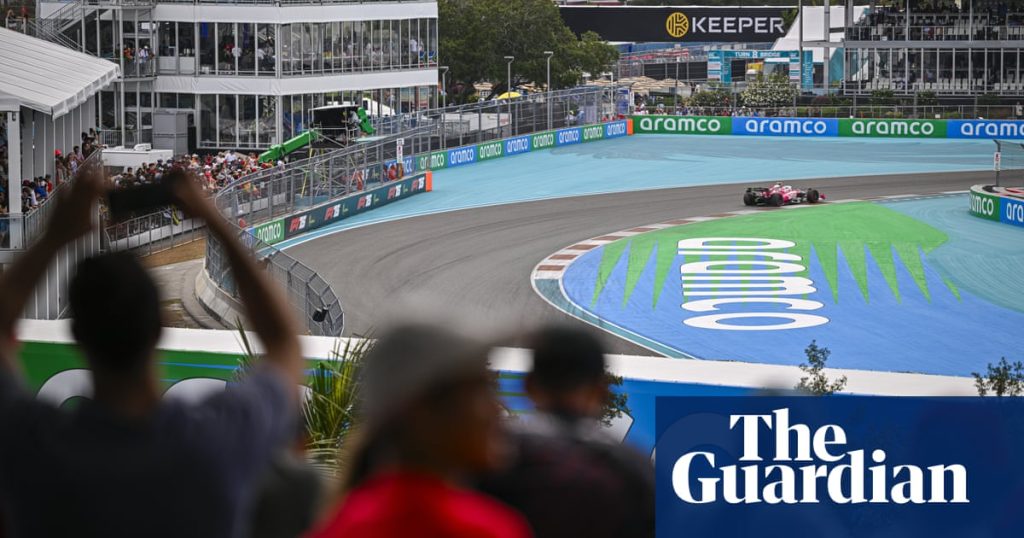The Rising Popularity of Formula One in Miami
On a humid Sunday afternoon in 2022, a blend of Hollywood stars, Silicon Valley entrepreneurs, and viral internet personalities found solace in shaded VIP suites as 20 cars sped by. Formula One, the latest sports craze in the US, had firmly established its presence in South Florida, aligning perfectly with Miami’s extravagant image.
A Star-Studded Event
Now four years into a 20-year tenure in the area, the Miami Grand Prix has become a hotspot for celebrity sightings: Elon Musk visiting the Red Bull garage, Jeff Bezos perched on McLaren’s pit wall, with everyone from Kardashians to sports icons taking laps around the vibrant circuit.
The Other Side of Miami
However, just outside the walls of Hard Rock Stadium lies a different aspect of Miami, Miami Gardens, a city not even within the official city limits. This area is a flourishing African-American community, serving as an economic refuge for Black Miamians displaced by urban development. With an average household income of $60,000, over 13% of the 110,000 residents live in poverty, and nearly 70% identify as Black.
Concerns Over the Stadium
The proposal for a stadium by Joe Robbie, founder of the Miami Dolphins, in 1985 raised alarms among local residents worried about displacement. Fast forward nearly 35 years, and Formula One arrived, bringing the Grand Prix to the very center of Miami Gardens, prompting locals to protest with signs declaring, “Formula One ‘Millions,’ Our Health ‘Priceless.’”
Environmental and Social Implications
While locals may not protest outside the stadium this Sunday, their concerns about the F1 event haven’t diminished. The Grand Prix has followed a pattern of placing contentious events in communities that are predominantly Black, often faced with objections from wealthier neighborhoods. Previous efforts to host a race downtown were abandoned after residents voiced traffic and noise complaints.
Community Engagement Efforts
Despite these issues, F1 and Hard Rock Stadium have taken steps to ensure local benefits through a Community Benefits Agreement. Initiatives include community funding, noise mitigation, and support for local businesses. Efforts such as providing free tickets to residents and hosting educational workshops have been part of the strategy to engage the community and alleviate some concerns.
Reflections from Residents
Residents’ sentiments about the Grand Prix are mixed. Some, like Ray Reyno, emphasize the positive economic impacts, while others remain skeptical about the environmental implications. The debate continues over whether the presence of such events truly benefits local communities, with many feeling that the long-term trade-offs still need addressing.



